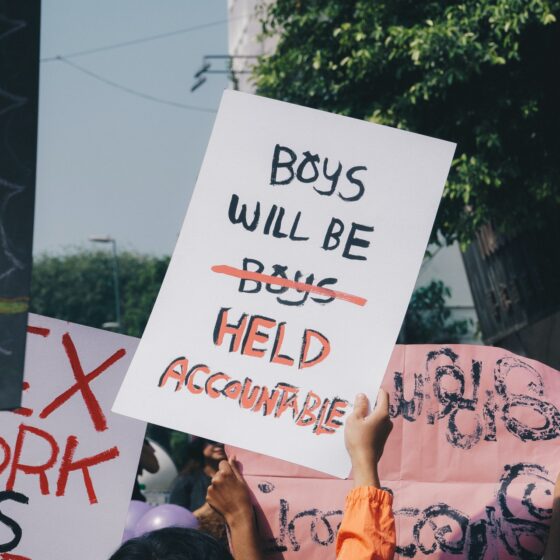For victims of trauma, social media has immense power to either make you or break you.
Navigating social media after a traumatic event requires an acute level of self-awareness and assertiveness, which for many, can take years to develop.
The confusion begins instantly. Imagine having experienced a traumatic event which strips you of your control, your agency and your sense of self, to then pick up your phone, scroll through Instagram and see the world operating as normal, despite your world as you know it having been completely obliterated.
This is a sensation I felt every time my ex-boyfriend abused me, criticised me, cheated on me, humiliated me and ignored me under the unspoken agreement that I would not be able to leave
This is a sensation I felt every time my ex-boyfriend abused me, criticised me, cheated on me, humiliated me and ignored me under the unspoken agreement that I would not be able to leave. Going on social media to be inundated with pictures of happy couples posing away would be a consistent reminder of how worthless and trapped I felt.
Here, a seed of resentment is sewn. Social media, generally only reflects a warped version of normality that projects the best aspects of people’s lives and it’s impossible to buy into this, and care about an influencer’s “five ways to style a white tee”, or feel happy for your friend’s cousin’s engagement when you are consumed with a new, dampened outlook on the world.
To understand Social Media’s impact, we must first understand how Trauma affects our brain.
The part of our brain which stores information and converts experiences into memories is called the Hippocampus, whilst our brain’s emotional computer and alarm system – the part that responds to danger – is the Amygdala, and our ability to make rational decisions, uphold socially appropriate behaviour and understand complex information is the role of our Pre-Frontal Cortex.
After a traumatic event, these parts of our brain go into survival mode and work differently in an attempt to protect us. This re-wiring of the brain can have a long term effect on how we perceive and interact with the world; non-threatening situations are now perceived as a threat, unsafe situations feel comfortable and our memories are stored incorrectly. This causes us to make irrational decisions, exhibit risk-seeking behaviour, be vulnerable to further exploitation, and interact with people differently.
We operate within what is known as a ‘Window of Tolerance’: our capacity to cope with everyday and stressful situations.
We operate within what is known as a ‘Window of Tolerance’: our capacity to cope with everyday and stressful situations. When we are triggered, our trauma responses fluctuate between states outside our Window of Tolerance which can include; Flight mode, (impulsive actions, running away, obsessive thoughts), Fight mode, (becoming angry, aggressive, anxious, and emotional), Freeze mode (disassociation, shutting down, memory loss, feeling on autopilot) and others.
For victims of trauma, learning to recognise our triggers, understand our feelings, unlearning internalised beliefs associated with trauma responses and developing healthy grounding techniques to regulate emotions is at the core of overcoming triggering situations.
Social media can insight trauma triggers in a multitude of ways, ranging from soliciting emotional vulnerability to putting our physical safety at risk. We may be exposed to content that reminds you of the traumatic event.
Despite moving to another town, social media served to maintain a connection with people who reminded me of my abusive ex-partner. Seeing people post jovial pictures with him or the annual slurry of birthday posts inaccurately celebrating him for being a happy, care-free, morally good person would trigger feelings of worthlessness, anger, and internalised victim-blaming. To overcome this I had to militantly and unapologetically enact a social media cleanse; deleting and un-friending anyone associated with my ex whose content I found triggering. This was risk management.
This was risk management.
External people often are directly or indirectly complicit in a person’s exposure to trauma and I ensured I blocked anyone who may be likely to report back to my ex and place me in a physically unsafe position. In an abusive relationship, social media can facilitate stalking and harassment, from fake accounts being made to your precise location being tracked. Snapchat’s Map feature tracks your location to within metre accuracy of when you were last online: the perfect tool for an abuser – you can turn this feature off via your app settings.
Safeguarding ourselves on social media often means using trauma responses in our favour; transform hyper-sensitivity into hyper-vigilance. Preventing possible trauma triggers can look like; getting over-familiar with your block, mute and unfriend buttons; removing any possibility of triggering content, turning notifications off for social media and news apps and removing location settings on your phone. Risk management practices can include; journaling, taking screenshots of any behaviour which is suspicious, reporting online harassment to the police, utilising healthy coping mechanisms and support networks, and taking regular social media breaks if necessary.
I’d also implore everyone to create a social media entity that reflects a healthy online environment. Manipulating those algorithms to work in our favour by following people who provide content that make us feel seen, heard and uplifted, tapping into positive news outlets and managing the information we receive has the potential to transform how we interact with social media. As someone whose hometown friends often don’t share the same socio-political interests, finding an online community with like-minded views on racial, gender and animal equality was vital.
People such as @demicolleen, @roobs_grlclb, @kyabuller and @eshekiamazuri are online friends whom I’ve never met but feel a kinship with, and highly recommend following them to make you feel empowered and informed. If you’re in need of a chuckle @rhea.ellen, @stevothemadman, @bomanizer and @iamtabithabrown have recently brought many a smile to my face. I also highly recommend following @themindgeek whose resources on trauma have benefitted me both personally and professionally, @shefestsy a feminist fringe festival celebrating International Women’s Day across South Yorkshire whom I am part of a fantastic likeminded team and @florencegiven – a great starting point for those overcoming past trauma, unhealthy relationships and self-doubt.
Once our social media presence feels safe, social media has the potential to be utilised as a great platform for victims of trauma, if we have the capacity to do so. Turning the negative into a positive can be transformative in how we see ourselves and the rest of the world.
For me, social media presents an opportunity to raise awareness and be vocal on issues I’m passionate about. What was once an anxiety-inducing activity is now a platform I use to advocate for myself and others on issues like domestic abuse.
For many trauma victims, building and enforcing this level of self-compassion on and offline is a lifelong practice, and it’s important to be lenient with our progress, which is likely to see peaks and troughs.
As a Domestic Abuse support worker, I applied a trauma-informed practice to my work, but it wasn’t until I accessed Trauma Therapy myself, that I start applying that same practice to my own mental health. What I learnt along the way is that social media does not and should not define our ability to command our own wellbeing.
Maintaining a sense of agency is often the foundational starting point for those with trauma, and with social media being an omnipresent feature in most of our lives, regaining control of our online space is a great way to start.









